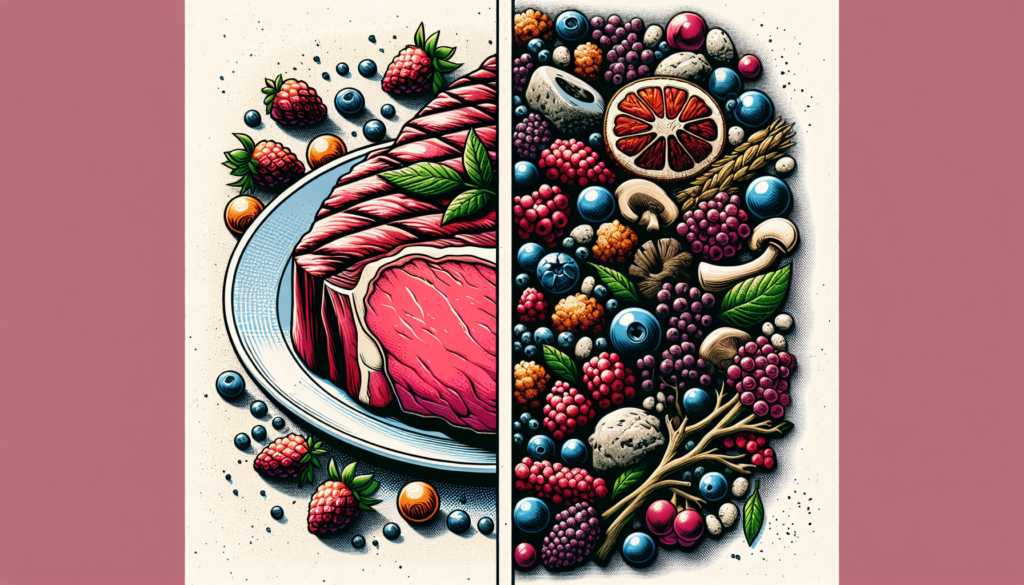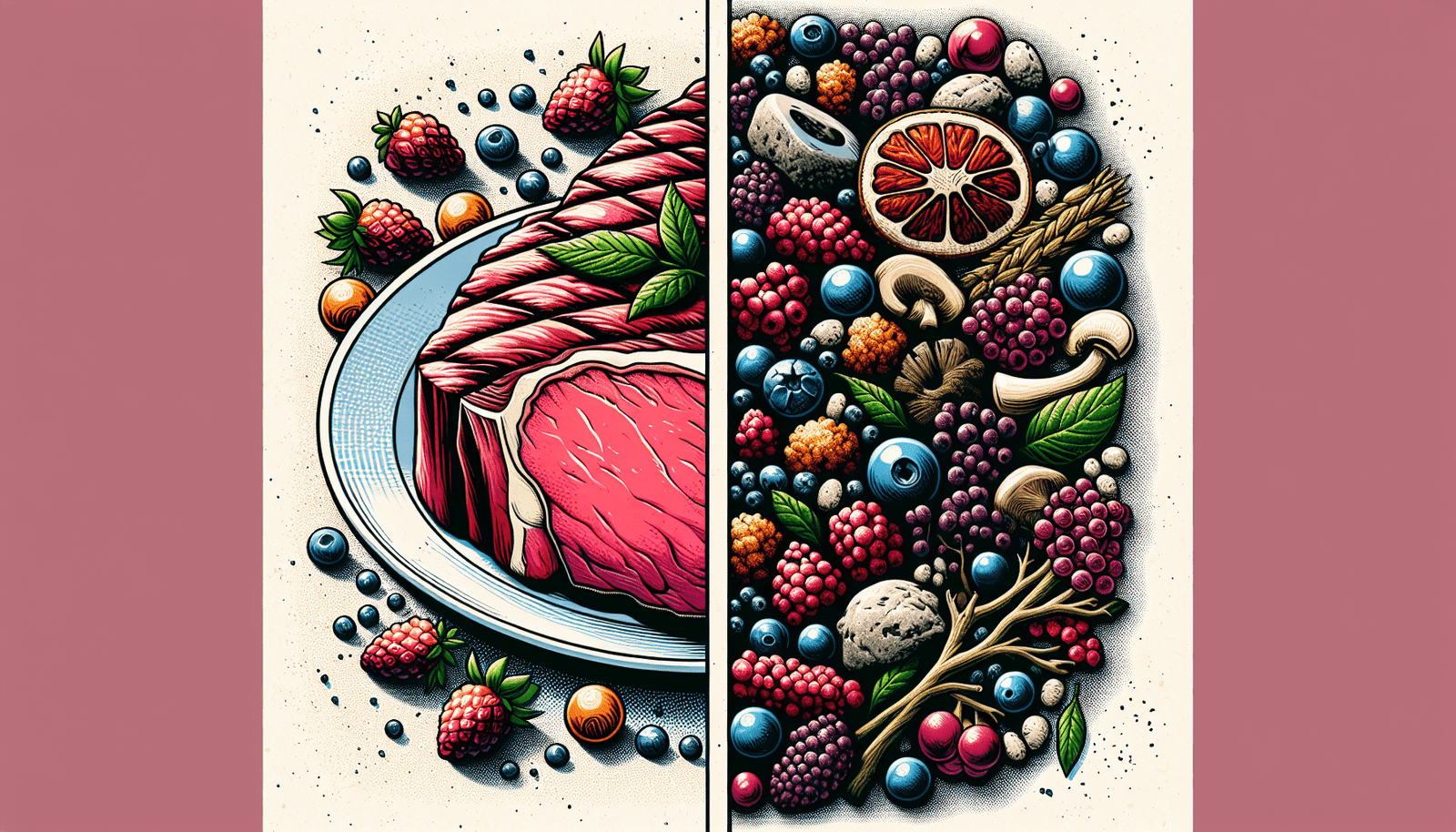Have you ever wondered what it would be like to eat like our ancestors? The Paleo Diet, also known as the caveman diet, aims to do just that. By mimicking the eating habits of our Stone Age forebears, this diet has gained popularity in recent years. But is it just another passing fad, or is there some truth to the idea that our bodies are better suited to the foods our ancestors ate? Join us on a journey to explore the Paleo Diet and whether it truly is a return to the Stone Age.

What is the Paleo Diet?
The Paleo Diet, also known as the Paleolithic Diet or the Caveman Diet, is a dietary plan that aims to mimic the eating habits of our hunter-gatherer ancestors from the Paleolithic era, which dates back about 2.5 million to 10,000 years ago. The premise behind the Paleo Diet is that our ancestors consumed a diet based on unprocessed, whole foods and had a more physically active lifestyle, which they claim is more in line with how our bodies are genetically designed to function.
Basic principles of the Paleo Diet
The basic principles of the Paleo Diet revolve around consuming foods that can be hunted, fished, or gathered, while avoiding processed foods, grains, legumes, and dairy. The idea is to focus on nutrient-dense, whole foods that provide the body with essential vitamins, minerals, and macronutrients.
Historical context of the Paleo Diet
The Paleo Diet draws its inspiration from the Paleolithic era, a time when early humans relied solely on hunting for their food. During this period, agricultural practices and the domestication of animals had not yet emerged, and humans primarily consumed wild animals, fish, fruits, vegetables, nuts, and seeds. Proponents of the Paleo Diet argue that our ancestors thrived on this diet, suggesting that it may be more suitable for our genetic makeup.
Key Characteristics of the Paleo Diet
Foods allowed on the Paleo Diet
The Paleo Diet encourages the consumption of nutrient-dense, whole foods. These include lean meats such as beef, poultry, and game meats, as well as fish and seafood. Fresh fruits and vegetables, along with nuts and seeds, are an essential part of the diet. Healthy fats, such as those found in avocado, coconut oil, and olive oil, are also encouraged. In moderation, natural sweeteners like honey and maple syrup are permitted.
Foods to avoid on the Paleo Diet
The Paleo Diet restricts the consumption of processed foods, grains, legumes, and dairy products. This means eliminating refined sugars, refined oils, processed meats, bread, pasta, rice, beans, lentils, peanuts, dairy milk, and cheese from your diet. The rationale behind this exclusion is that these foods were not part of our ancestors’ diet and may lead to inflammation, digestive issues, and other health problems.
Benefits of the Paleo Diet
The Paleo Diet boasts various potential benefits. By focusing on whole, unprocessed foods, it promotes the intake of essential nutrients and reduces the consumption of unhealthy additives and preservatives. Many individuals find that adopting a Paleo Diet can lead to weight loss, improved digestion, increased energy levels, and reduced inflammation. Additionally, the emphasis on high-quality protein sources and healthy fats may help with muscle growth and satiety.
Scientific Evidence and Controversies
Research supporting the Paleo Diet
While there is a growing body of research supporting the health benefits of the Paleo Diet, it is important to note that scientific consensus has not been fully established. Some studies have shown that the Paleo Diet can lead to weight loss, improved glucose tolerance, and better blood lipid profiles. Additionally, research suggests that the diet may help manage certain conditions such as type 2 diabetes, obesity, and cardiovascular disease.
Criticism and concerns about the Paleo Diet
Critics of the Paleo Diet argue that it is based on an overly simplistic view of our ancestors’ diets and that the available evidence is limited and inconclusive. There are concerns that the restrictive nature of the diet may lead to nutrient deficiencies, particularly in terms of calcium and vitamin D due to the avoidance of dairy products. Additionally, some worry that the high intake of animal products may increase the risk of certain health problems, such as heart disease and certain cancers.
Long-term effects of the Paleo Diet
The long-term effects of following the Paleo Diet have not been extensively studied. It is crucial to consider that the diet’s sustainability over an extended period can be challenging for some individuals due to its restrictive nature. However, if properly planned, the Paleo Diet can provide adequate nutrition and may be a viable option for certain individuals.
Living Like Our Ancestors: Is It Feasible?
Practical challenges of following the Paleo Diet
One of the practical challenges of following the Paleo Diet is the difficulty in finding and preparing unprocessed, whole foods. In today’s fast-paced society, convenience foods and processed options have become the norm. Additionally, the exclusion of grains and legumes may lead to limited dietary choices, particularly for individuals with food allergies or intolerances. The Paleo Diet also requires a significant amount of meal planning, as it is not always readily available in restaurants or social gatherings.
Adapting the Paleo Diet to modern lifestyles
While adhering strictly to the traditional Paleolithic diet may be challenging, many individuals adapt the Paleo Diet to their modern lifestyles. This may involve incorporating some foods that were not available to our ancestors, such as certain dairy products or legumes. The main objective is to prioritize whole, unprocessed foods while minimizing the intake of processed and refined options. This flexible approach allows for a more sustainable and realistic way of following the principles of the Paleo Diet.

Paleo Diet vs. Other Popular Diets
Comparison with the ketogenic diet
The Paleo Diet and the ketogenic diet share similarities in their emphasis on whole, unprocessed foods and the avoidance of grains and refined sugars. However, the ketogenic diet focuses on achieving a state of ketosis, where the body relies on fat for fuel instead of carbohydrates. In contrast, the Paleo Diet does not have specific macronutrient requirements and instead focuses on overall food choices. Both diets have shown potential benefits, and the choice between them may depend on individual goals and preferences.
Contrasting the Paleo Diet with vegetarian and vegan diets
One fundamental difference between the Paleo Diet and vegetarian or vegan diets lies in the inclusion or exclusion of animal products. While vegetarians and vegans avoid meat altogether, the Paleo Diet encourages the consumption of lean meats, fish, and seafood as protein sources. Conversely, vegetarian and vegan diets center around plant-based foods, legumes, and grains. The decision between these dietary approaches depends on personal beliefs, ethical considerations, and individual health needs.
The Paleo Diet and Health
Impact of the Paleo Diet on weight loss
One of the reasons individuals are drawn to the Paleo Diet is its potential for weight loss. Several studies have suggested that the Paleo Diet can lead to significant reductions in body weight and waist circumference. The emphasis on whole, unprocessed foods and the exclusion of refined sugars and unhealthy fats may contribute to this effect. However, it is essential to remember that weight loss is a complex process influenced by various factors, and individual results may vary.
Effect of the Paleo Diet on blood sugar levels
The Paleo Diet may have positive effects on blood sugar levels. By eliminating refined sugars and processed carbohydrates, the diet may help stabilize blood glucose levels and improve insulin sensitivity. Studies have shown that individuals following a Paleo Diet experienced improvements in glycemic control, which can be beneficial for individuals with type 2 diabetes or prediabetes.
Influence of the Paleo Diet on cardiovascular health
The Paleo Diet’s emphasis on whole, unprocessed foods and healthy fats may have positive effects on cardiovascular health. Research suggests that the diet can lead to reductions in blood pressure, total cholesterol, and triglyceride levels. By promoting the consumption of omega-3 fatty acids found in fish and seafood, it may also contribute to a healthier lipid profile and lower risk of heart disease. However, more extensive, long-term studies are needed to establish the diet’s impact on cardiovascular outcomes.
Potential risks and precautions
While the Paleo Diet generally consists of nutrient-dense foods, there are potential risks and precautions to consider. The exclusion of grains and legumes may limit dietary fiber intake, which can impact digestive health. Additionally, individuals who follow the diet strictly may be at risk of nutrient deficiencies, particularly calcium and vitamin D, due to the absence of dairy products. It is essential to consult with a healthcare professional or registered dietitian before embarking on any significant dietary changes to ensure nutritional adequacy.
Paleo Diet Recipes and Meal Planning
Sample Paleo Diet meal plan
A sample Paleo Diet meal plan could include a breakfast of scrambled eggs with vegetables and avocado, a lunch of grilled chicken salad with olive oil dressing, and a dinner of baked salmon with steamed broccoli and sweet potato. Snack options can include mixed nuts or carrot sticks with guacamole. It is essential to focus on incorporating a variety of fruits, vegetables, lean proteins, and healthy fats while avoiding processed foods and grains.
Delicious Paleo Diet recipes
- Paleo Banana Pancakes: Mash ripe bananas and mix with almond flour and eggs to create a batter. Cook the pancakes in coconut oil until golden brown. Serve with fresh berries and a drizzle of honey.
- Baked Lemon Herb Chicken: Marinate chicken thighs in a mixture of lemon juice, olive oil, garlic, and a variety of herbs. Bake in the oven until cooked through and serve with a side of roasted vegetables.
- Cauliflower Rice Stir-Fry: Pulse cauliflower florets in a food processor until they resemble rice grains. Stir-fry the “rice” in a pan with mixed vegetables, ginger, garlic, and your choice of protein such as shrimp or chicken. Season with coconut aminos or tamari sauce for added flavor.
The Paleo Diet and Exercise
Optimal exercise routines for the Paleo Diet
Physical activity is an essential component of a healthy lifestyle, regardless of the chosen diet. The Paleo Diet advocates for a more active lifestyle, as our ancestors were constantly engaged in hunting and gathering activities. Optimal exercise routines for the Paleo Diet may include a combination of cardiovascular exercises, such as walking, running, or cycling, along with strength training using body weight or free weights. It is crucial to find activities that you enjoy and can incorporate into your daily routine.
Enhancing athletic performance with the Paleo Diet
Some athletes have reported improvements in performance and recovery when following a Paleo Diet. By prioritizing nutrient-dense, whole foods, athletes can ensure they are fueling their bodies with the necessary vitamins, minerals, and macronutrients for optimal performance. Additionally, the diet’s focus on high-quality protein sources can provide the building blocks for muscle repair and growth. However, individual responses to the diet may vary, and it is important to listen to your body’s needs and consult with a sports nutritionist if necessary.
Paleo Diet for Specific Populations
Paleo Diet for athletes
The Paleo Diet can be adapted to meet the unique nutritional needs of athletes. Athletes may need to slightly modify their macronutrient ratio to ensure they are consuming enough carbohydrates for energy and adequate protein for muscle repair and recovery. It is crucial for athletes to focus on nutrient timing, consuming meals and snacks before and after workouts to optimize performance and muscle glycogen replenishment. Working with a registered dietitian who specializes in sports nutrition can provide personalized guidance for athletes following a Paleo Diet.
Paleo Diet for pregnant women
The Paleo Diet can be safe and nutritious for pregnant women if it is adapted to meet their increased nutritional needs. Pregnant women should ensure they are consuming enough calories, protein, vitamins, and minerals to support the growth and development of the fetus. It is recommended to include a variety of nutrient-dense foods, such as lean meats, fish, fruits, vegetables, nuts, and seeds, while adjusting portion sizes as needed. Pregnant women should consult with a healthcare professional or registered dietitian to ensure their dietary choices align with their specific needs.
Paleo Diet for children
The Paleo Diet can be a healthy option for children, as it encourages the consumption of whole, unprocessed foods. However, it is crucial to ensure that children are receiving a balanced diet that provides all the necessary vitamins, minerals, and macronutrients for growth and development. Parents should focus on including a variety of fruits, vegetables, lean proteins, and healthy fats in their children’s meals. It is also essential to monitor their nutrient intake, particularly calcium and vitamin D, which may need to be supplemented if dairy products are excluded. Consulting with a pediatrician or registered dietitian can help guide parents in providing a well-rounded Paleo Diet for their children.
Conclusion
In conclusion, the Paleo Diet is a dietary approach that aims to emulate the eating patterns of our Paleolithic ancestors. By focusing on unprocessed, whole foods and avoiding processed foods, grains, legumes, and dairy, the diet proponents argue that it can lead to improved health and well-being. While scientific evidence supporting the diet’s benefits exists, more research is needed to establish its long-term effects and address any potential risks or deficiencies. As with any dietary change, it is important to consider individual needs, preferences, and consult with healthcare professionals or registered dietitians to ensure nutritional adequacy before starting the Paleo Diet.

